Have you recently encountered the Mac error code 8072? Though Macs are highly reliable, you can still face the Mac error 8072, which is not dependent on your Mac version.
The error code 8072 on Mac occurs when you try to delete a Time Machine backup or a corrupted file. It can even happen when you are trying to get rid of Trash. Users generally see this message — «The operation t be completed because an unexpected error occurred (error code -8072).»
Determining the exact cause is challenging, which is why troubleshooting these problems can be tedious. But there are multiple solutions you can adopt and see which one resolves the error code 8072 in Mac Finder.
| Workable Solutions | Step-by-step Troubleshooting |
|---|---|
| Fix 1. Force Reboot Your Mac | The simplest solution is to force reboot the macOS and reset…Full steps |
| Fix 2. Check the Permissions on Mac | Sometimes, the error occurs because you don’t have permission to delete it…Full steps |
| Fix 3. Force Empty Trash Can | go to the Trash and empty it. You should click the Empty button…Full steps |
| Fix 4. Run Disk Utility First Aid | You can also run Disk Utility First Aid to see if it fixes the error code…Full steps |
| More Fixes | The other 2 fixes are available here for you to follow and fix Mac error code 8072…Full steps |
How to Handle the Error Code 8072 on Mac
The appearance of the Mac error code 8072 can quickly become frustrating. However, there are various solutions you can explore to resolve the problem. Before we move ahead with the fixes, it is critical to understand data security. Keep in mind that data loss might happen, and as such, safeguarding it is vital.
Fix 1. Force Reboot Your Mac
The simplest solution is to force restart MacBook. You need to press the power button and hold it to do that. Make sure not to release the key until the system shuts down. After a few seconds, press the power button to turn it on. Check and see if the issue is resolved.
Fix 2. Check the Permissions on Mac
Sometimes, the error occurs because you don’t have permission to delete it. You need to check to see if you have the required permission.
Here are the steps to follow —
Step 1. Go to the file you want to delete and control-click on it.
Step 2. Select «Get Info».
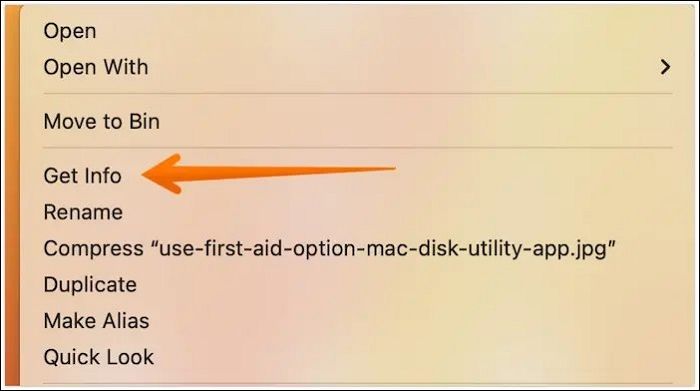
Step 3. Scroll down to click on «Sharing & Permissions» from the Get Info window. Expand the option.
Step 5. Check the list of accounts and the type of permission granted.
Step 6. If you see a lock icon at the bottom, click on it.

Step 7. Enter your admin password.
Step 8. Now, choose the account you want to delete. Select «Read & Write».

Fix 3. Force Empty Trash Can
Are you facing a problem in emptying the Trash on your system? Well, you can use Mac Safe Mode for this task.
Check out the steps here –
Step 1. Go to the «Apple icon».
Step 2. Select «Restart» from the drop-down menu.

Step 3. As the system reboots, press and hold the shift key.
Step 4. Release the key when you see the Apple logo displayed on the screen.
Step 5. The system will enter safe Mode.
Step 6. Now, go to empty the Trash. You must click the «Empty» button on the upper right-hand side.
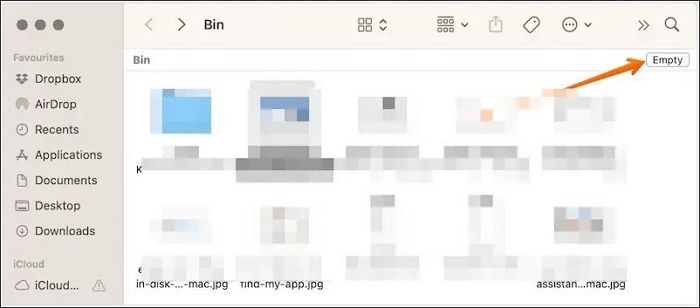
Step 7. After that, click «Restart». Allow Mac to reboot normally.
Fix 4. Run Disk Utility First Aid
You can also run Disk Utility First Aid to see if it fixes the error code. Take a look at the steps to follow –
Step 1. Boot the system into the Mac Recovery Mode. Wait for the macOS Utilities window to appear.
Step 2. Now, select «Disk Utility». Select «Continue». Go to «View».
Step 3. Select «Show All Devices».
Step 4. Choose the Mac hard drive from the left sidebar.
Step 5. On the top, you will see First Aid. Click on it.

Step 6. When the pop-up appears, click «Run».
Step 7. Choose «Continue».
Step 8. You will see a pop-up box saying – Running First Aid on «SVN.»
Step 9. Select «Done».
Fix 5. Force Delete Files with Terminal
Another excellent way to resolve the Mac error code 8072 is to use Terminal on Mac. Check out the steps that you need to follow –
Step 1. Open Terminal. For that, click on «Applications» > «Utilities» > «Terminal».
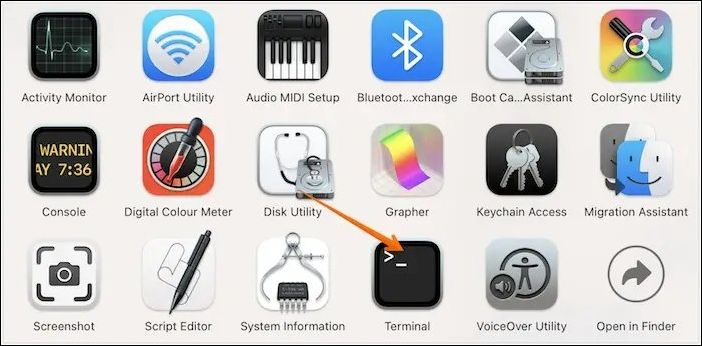
Step 2. Type — sudo rm -R. It will ask for the password. Enter your admin password to continue.

Step 3. Go to the Trash folder.
Step 4. Select the files you wish to remove.
Step 5. Drag these files to the Terminal window.
Step 6. Now, hit the Enter key.
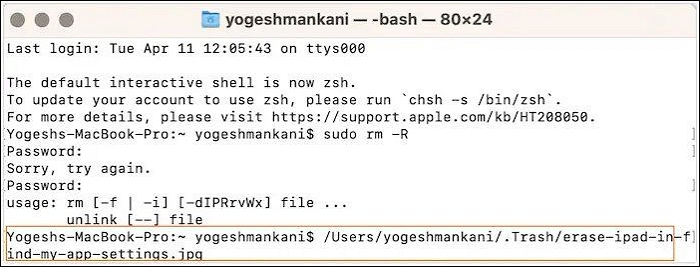
Step 7. When asked, type the admin password.
Step 8. Now, Mac will remove the files from Trash.
Fix 6. Fix from Time Machine
Has Time Machine created the file you want to delete? In that case, there are some steps you can follow to fix the error code 8072. These are —
Step 1. Go to the Apple menu. A drop-down menu will appear. Select System Settings from there.

Step 2. Type Time Machine from the search bar on the left-hand side. Once you find it, click on it.

Step 3. Drag the slider to the OFF part on the right-hand side.
Step 4. This turns off the Time Machine.
Step 5. Now, try to delete the files.
Note: Turn on Time Machine after the files are deleted; forgetting to do so will lead to no backup of files.
If one of the methods is helpful in resolving the Mac error code 8072, share it on Facebook, Twitter, Instagram, and other social media platforms!
How to Recover Deleted Data on Mac
Are you anxious about data loss due to the Mac Error Code 8072? Well, that sometimes happens, so you must take data security seriously. If data loss occurs, it is vital to take professional data recovery software assistance. In that scenario, you can try EaseUS Data Recovery Wizard for Mac.
The EaseUS Data Recovery Wizard for Mac is a powerful data recovery program. With this tool, you can retrieve various data types without much hassle and recover permanently deleted files Mac from different Mac-based devices. Besides, exciting features such as file filters, recovery to the cloud, etc., are also present.
- Restore data irrespective of the reason, such as accidental deletion, malware attack, etc.
- Retrieve various data types such as videos, documents, music files, photos, etc.
- Recover data from Mac-based devices such as SSD, HDD, fusion drive, etc.
- Deep and quick scan to help recover trash Mac and without much hassle.
What’s more, this softwsoftware’s exciting part is it is user-friendly. The simple user interface enables even novice users to use the software easily. You can opt for the trial version and see if it suits your needs.
Step 1. Select the drive to be scanned
In the main EaseUS Data Recovery Wizard window, there will be a list of the drives connected to your Mac. Select the drive you need to recover lost/deleted files from, and click the «Search for lost files» button.
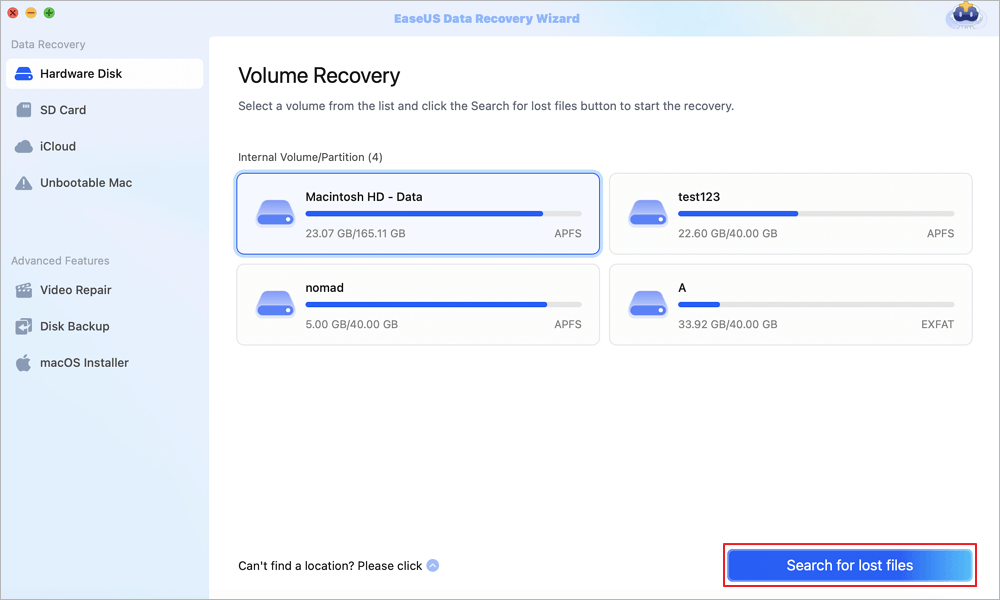
Step 2. Select your lost data/files
EaseUS Data Recovery Wizard for Mac will immediately scan your selected disk volume and display the scanning results on the left pane. You can sort the results to find the wanted files if you are looking for certain files.
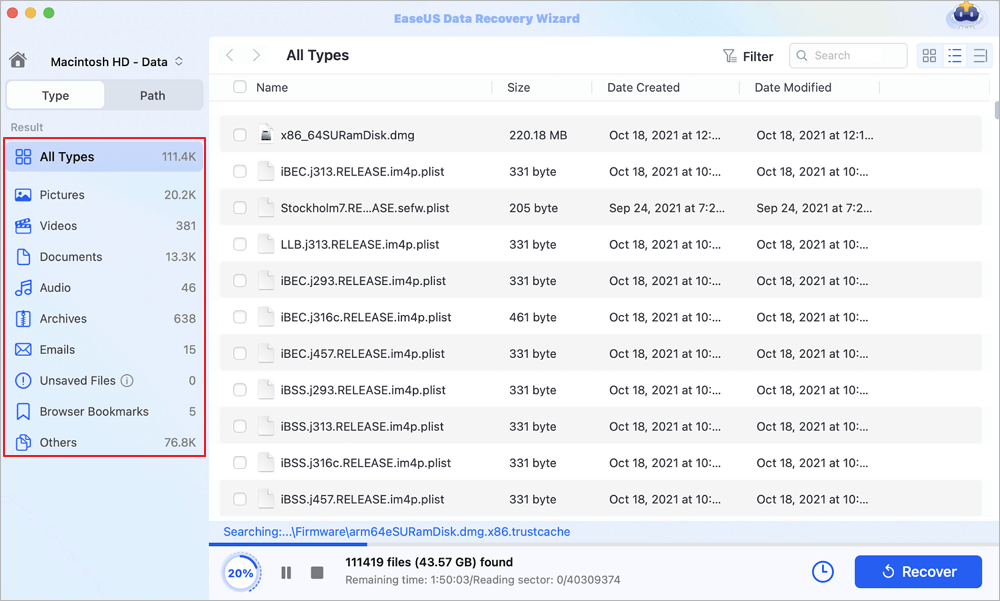
Step 3. Recover lost/deleted data
Once you have found the desired files, preview the files and then click «Recover» to begin the recovery of your deleted/lost Mac files.
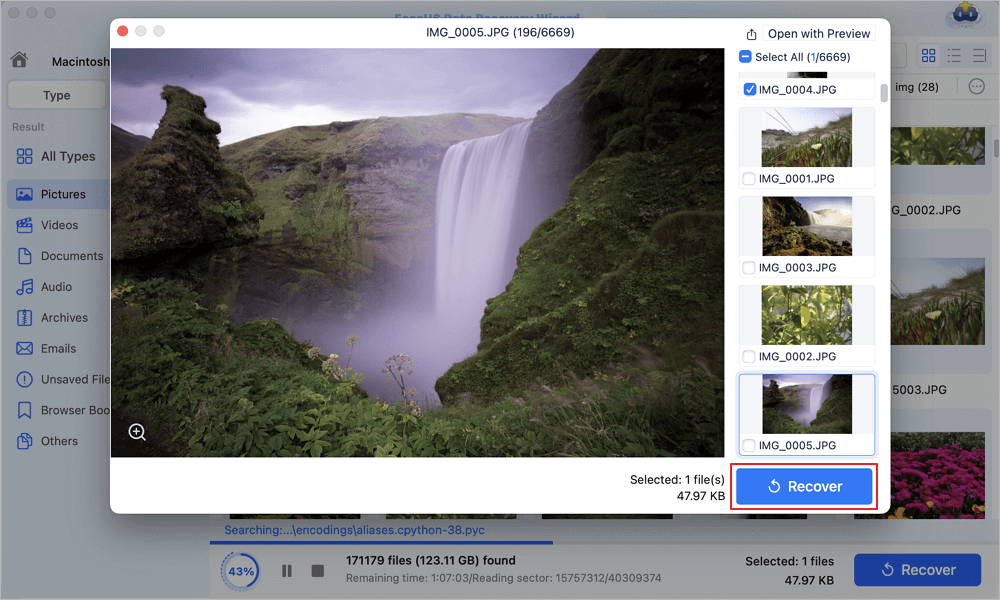
Why Can I Delete the Corrupted File or Time Machine Backup
Multiple causes can lead to the error code 8072. Multiple causes can help to know the reasons so that you can learn more about the solutions. Let’s take a look —
😦Reason 1. Unintentional format
Have you ever accidentally formatted your system? While we try to refrain from tweaking our system without any reason, such things can still happen.
🦠Reason 2. Viruses or malware
Sometimes, your system encounters a vicious virus or malware attack, leading to the corruption of files. As a result, you will face difficulty removing them, and the error code 8072 will occur.
📃Reason 3. Corrupted system files
The primary cause of the error code 8072 is the presence of corrupted files. It can be due to various reasons, such as system crashes, power outages, mismatched versions, etc.
🟦Reason 4. Modification of BIOS settings
A lack of complete knowledge is a terrible thing. Users often change the BIOS settings without knowing much about it, which could lead to the 8072 error code on Mac.
💻Reason 5. Sharing of data in the unsupported format
It is vital to always share data in supported formats. That way, they won’t be any issues between the system and the media. Otherwise, you could come across the error code 8072.
Final Thoughts
Are you irritated with the Mac Error Code 8072? Even though Mac is a robust system, such issues might crop up. Understanding the reasons leading to the error code is significant, and the grounds include unintentional formatting, malware attack, corrupt system files, etc.
There are multiple solutions users can try to resolve the error code 8072. For starters, you can force reboot the system and run Disk Utility First Aid or Time Machine. In case, data loss occurs, you can take help from professional data recovery software.
For that, you can choose EaseUS Data Recovery Wizard for Mac. It is efficient and easy-to-use data recovery software that aids users in restoring data, irrespective of the reasons. Check out EaseUS Data Recovery Wizard for Mac today!
Knowing more about Mac Error Code 8072 will help you deal efficiently. For that, scroll through the questions and answers listed below —
1. How to fix Mac error code 8076?
There are several ways to fix Mac error code 8076. These include using Disk Utility, disabling «ignore permissions on this device», logging out and restarting, etc.
2. Whcan’t’t I create a new folder on my Mac?
One of the reasons for not being able to create a new folder on your Mac is that you don’t have writing privileges, and you must ensure you have the permissions needed to make the folder.
3. How to clear the cache on Mac?
To clear the cache on Mac, here are the steps –
- Go to Finder.
- Select Go and then Go to Folder.
- Type ~//Library//Caches
- Press Go.
- After reaching the Caches folder, delete what you want.
4. How to recover data after forcing empty Mac Trash?
You must opt for reliable data recovery software to recover data after forcing empty Mac Trash. In that case, you can choose EaseUS Data Recovery Wizard for Mac. The tool is easy to use and aids in hassle-free data retrieval.
Как обрабатывать код ошибки 8072 на Mac (06.23.23)
macOS на данный момент является одной из самых эффективных платформ, поскольку она упростила большинство основных компьютерных операций. Например, установить новые приложения так же просто, как перетащить приложение в папку «Приложения», а поиск файлов с Spotlight выполняется намного быстрее. С другой стороны, удалить файлы так же просто, как перетащить их в корзину.
Эти процессы можно выполнять без каких-либо затруднений в большинстве случаев. Однако при несоблюдении определенных параметров при выполнении задачи обычно возникают ошибки. Например, несколько пользователей Mac сообщили о получении кода ошибки 8072 на Mac при попытке удалить файл или переместить его в корзину. Это означает только то, что удаляемый файл или файлы не соответствуют требованиям для выполнения задачи.
В этой статье будет обсуждаться, что такое код ошибки 8072 и почему ваш Mac получает эту ошибку. Мы также покажем вам, как устранить ошибку с кодом 8072 для Mac.
Что такое код ошибки 8072 на Mac?
Код ошибки 8072 — это распространенная проблема Mac, которая возникает, когда пользователь пытается удалить поврежденный файл или резервную копию Time Machine, или когда пользователь пытается очистить корзину. Однако есть пользователи, которые сообщали об этой же ошибке даже при попытке переименовать файл.
Код ошибки 8072 обычно сопровождается следующим текстом:
Операция не может быть завершенным из-за возникновения непредвиденной ошибки (код ошибки -8072).
Когда вы получаете это сообщение, трудно определить причину ошибки, что затрудняет устранение неполадок. Если вы получаете код ошибки 8072 на Mac, это означает, что проблема связана с правами доступа к файлу или файлам, которые вы хотите удалить.
Возможно, файл, который вы пытаетесь переместить в корзину, в настоящее время используется операционной системой Mac. Ошибка также может возникнуть, если вы пытаетесь удалить программную функцию, например часть резервной копии Time Machine или другие сторонние приложения.
Каждый раз, когда вы инициируете удаление файла, система проверяет если текущий пользователь имеет достаточные разрешения для доступа или внесения изменений в этот файл. Система также проверяет, не используется ли файл в данный момент. Если любой из этих двух критериев даст обратный эффект, процесс удаления завершится неудачно, и вы увидите код ошибки 8072.
Если ваш Mac получает код ошибки 8072, вам необходимо решить проблемы с разрешениями, прежде чем вы удалить, переименовать или внести какие-либо изменения в рассматриваемый файл.
Как исправить код ошибки 8072 на Mac
Перемещение ненужных файлов в корзину — это простая компьютерная задача, которую следует выполнять плавно и эффективно. Если при удалении или изменении файлов у вас возникают проблемы, возможно, файл поврежден или уже используется. Вот несколько шагов, которые вы можете попробовать, если вы получаете код ошибки 8072 на вашем Mac:
Исправление №1: убедитесь, что у вас достаточно прав.
Когда вы пытаетесь удалить или переименовать файл и вы получите код ошибки 8072, проверьте, достаточно ли у вас прав для чтения и записи файла. Для этого:
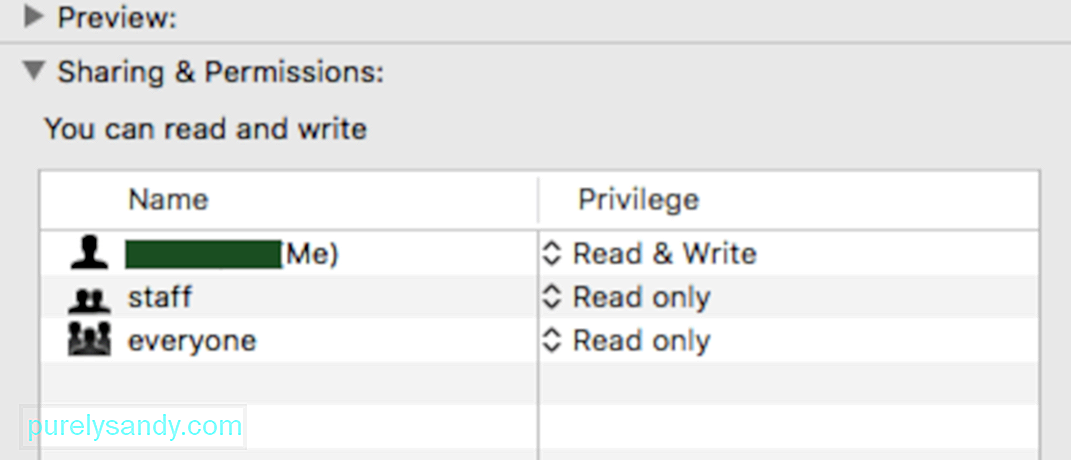
Теперь у вас должно быть достаточно разрешений для удаления файла.
Исправление №2: принудительно очистите корзину.
В macOS есть полезная функция корзины, которой большинство пользователей не пользуется. в курсе. Вы можете принудительно очистить корзину, если некоторые файлы слишком устойчивы для удаления. Для этого выполните следующие действия: 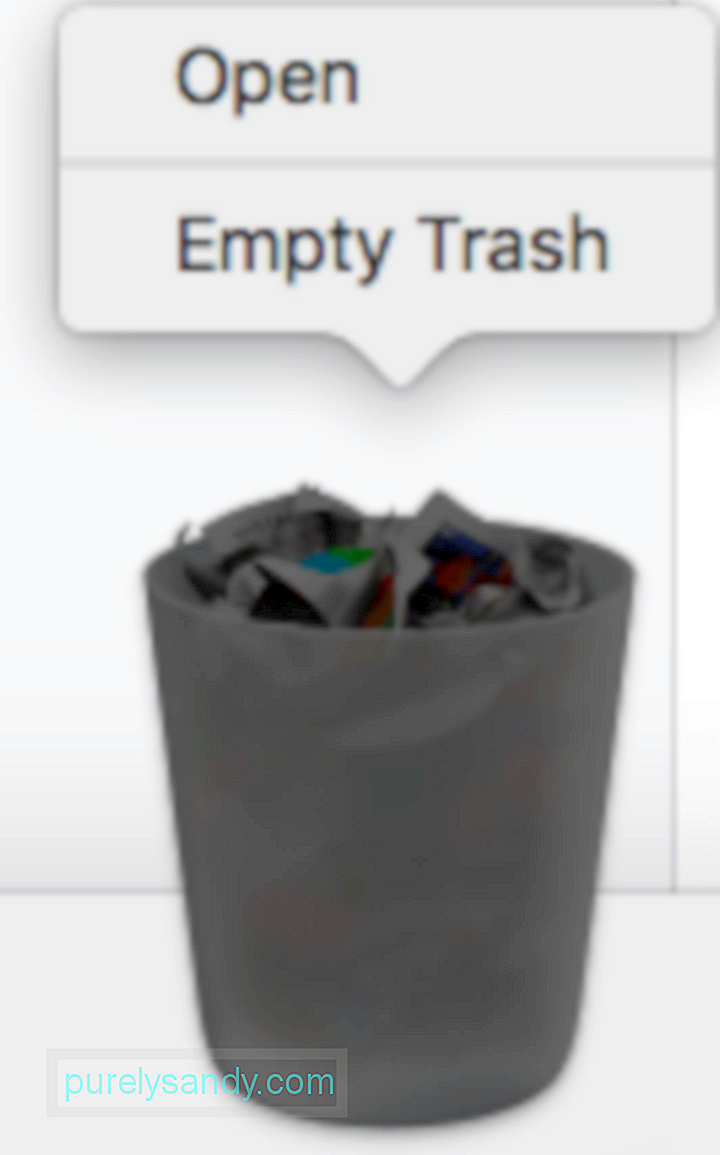
Вы можете проверить, все ли файлы были удалены, открыв папку «Корзина».
Исправление №3: используйте команды для удаления файлов.
Если файлы, которые вы хотите удалить, находятся в другом месте и не находятся в корзине, вы можете использовать Терминал для перезаписи элементов управления разрешениями и удаления их вручную. Этот метод можно использовать, когда файл или файлы, о которых идет речь, повреждены или когда процесс удаления вызывает больше ошибок, таких как сбой macOS или ваш Mac перестает отвечать на запросы.
Для этого следуйте инструкциям ниже:

После выполнения команды ваш файл или папка теперь должны быть удалены.
Исправление №4: используйте стороннее приложение.
Если описанные выше методы не помогают или вам нужно удалить файлы, к которым трудно получить доступ, например ненужные файлы и кешированные файлы, вы можете использовать Mac программное обеспечение для очистки , чтобы очистить вашу систему. Надежное приложение для очистки должно очистить весь диск на предмет ненужных файлов и удалить их.
Исправление № 5: переопределить разрешения при удалении файлов Time Machine.
Если файл, который вы хотите удалить, является частью файлов резервных копий, созданных с помощью Time Machine (TM), вы можете использовать этот метод для устранения кода ошибки 8072. Вы не сможете удалить файлы резервных копий Time Machine, когда эта функция запущена:
Чтобы переопределить разрешение файла, выполните следующие действия. выполните следующие действия:
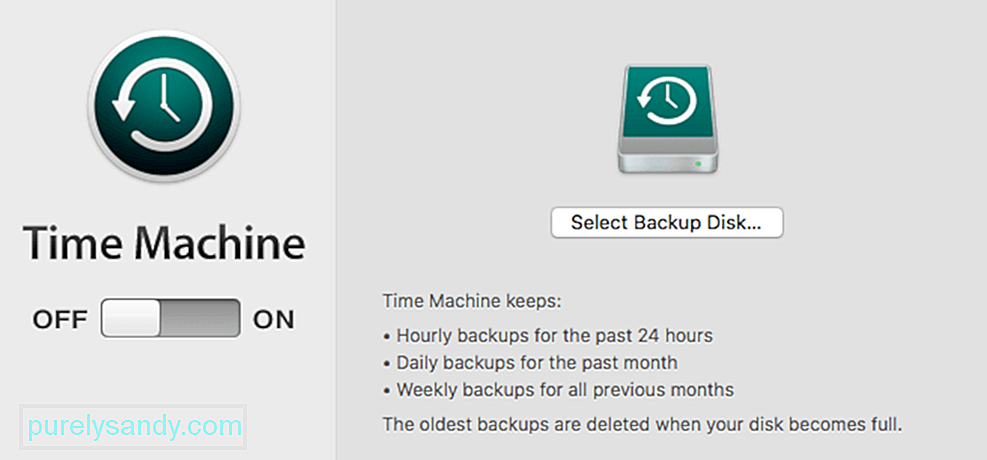
Резюме
Когда вы столкнетесь с кодом ошибки 8072 при удалении или внесении изменений в файлы и папки на вашем Mac, вы можете легко решить эту проблему, выполнив соответствующие исправления, указанные выше. Код ошибки 8072 в основном является ошибкой разрешения, поэтому вам необходимо убедиться, что ни одно приложение не использует файл и что у вас есть возможность читать и записывать в файл, чтобы иметь возможность вносить изменения. Вы также можете использовать команды или стороннее приложение для управления файлами, если файлы слишком устойчивы для обычного процесса удаления.
YouTube видео: Как обрабатывать код ошибки 8072 на Mac
06, 2023
Looks like no one’s replied in a while. To start the conversation again, simply
ask a new question.
Hi,
I am trying to delete a folder of Word documents from Backups on a WD HDD. I have changed all the permissions so I am now the owner, but an error message saying the folder cannot be deleted because of ‘error code -8072’ appears.
I have googled this and searched Apple’s Knowledge base — no joy. I also saw an earlier post on this referring to the iPhoto forum, but this is not iPhoto related.
Any advice gratefully received. Thanks.
20″ iMac 2008,
Mac OS X (10.6.3)
Posted on Apr 2, 2010 8:55 PM
Error code -8072
Reading time: 6 Minutes
macOS is an efficient platform that simplifies basic computer operations. Installing new apps is as easy as dragging them to the Applications folder, and searching for files is quicker with Spotlight. Deleting files is also simple, just drag them to the Trash.
These processes can be carried out without a hitch most of the time. However, it is normal to encounter errors when certain parameters are not met when performing the task. For instance, several Mac users reported getting the error code 8072 on Mac when they were trying to delete a file or move it to the Trash. This only means that the file or files being deleted do not meet the requirements for the task to be completed.
This article will discuss what the error code 8072 is and why your Mac is getting this error. We’ll also show you the steps on how to troubleshoot the Mac error code 8072.
What is the Error Code 8072 on Mac?
The error code 8072 is a common Mac issue that happens when a user is trying to delete a corrupted file or a Time Machine backup, or when the user is attempting to empty the Trash. However, there are users who reported getting the same error even when trying to rename a file.
The error code 8072 is usually accompanied by the following text:
The operation can’t be completed because an unexpected error occurred (error code -8072).
When you get this message, it is hard to determine what the cause of the error is, making it quite difficult to troubleshoot. If you’re getting the error code 8072 on Mac, this means that the problem is related to the permissions of the file or files that you want to delete.
It is possible that the file you are trying to move to Trash is currently being used by the Mac operating system. The error might also occur if you are trying to delete a software feature, such as a part of the Time Machine backup or other third-party applications.
Whenever you initiate the removal of a file, the system checks if the current user has sufficient permissions to access or make changes to that file. The system also checks if the file is not currently in use. If any of these two criteria backfires, the deletion process will fail and you’ll see the error code 8072.
If your Mac is getting the error code 8072, you need to resolve the permission issues first before you delete, rename, or make any changes to the file in question.
How to Fix the Error Code 8072 on Mac
Moving unnecessary files to the Trash is a basic computer task that should be carried out smoothly and efficiently. If you’re having issues when deleting or making changes to your files, the file could be corrupted or currently being used. Here are some steps you can try if you’re getting the error code 8072 on your Mac:
Fix #1: Make Sure You Have Sufficient Permission.
When you’re trying to delete or rename a file and you get the error code 8072, check if you have enough permissions to read and write the file. To do this:
- Right-click on the file, then select Get Info.
- Scroll down to the Sharing & Permissions.
- Look for your account name under Name, then check the value under Privilege.
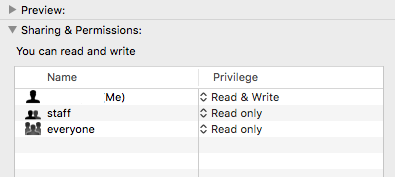
- If you see Read & Write, then that means you have sufficient permissions to edit the file.
- If you see Read only, click on the arrow beside it, then choose Read & Write.
You should now have enough permissions to delete the file.
Fix #2: Force-Empty the Trash.
macOS has a useful feature of the Trash that most users are not aware of. You can actually force-empty the Trash when some files are too stubborn to be deleted. To do this, follow the steps below: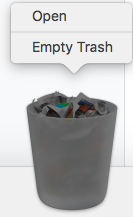
- Move the cursor over the Trash icon for a few seconds to activate the context menu.
- Press and hold the Shift + Option buttons, then click on Empty Trash from the menu.
- This should remove all the contents of your Trash folder.
You can check if all the files have been deleted by opening the Trash folder.
Fix #3: Use Commands to Delete Files.
If the files you want to delete are located elsewhere and are not in the Trash, you can use Terminal to overwrite permission controls and delete them manually. This method can be used when the file or files in question are corrupted or when the deletion process causes more error, such as macOS crashing or your Mac becoming unresponsive.
To do this, follow the instructions below:
- In the Finder menu, click Go > Applications > Utilities, then open Terminal.
- In the Terminal window, type in the following command. Don’t press Enter yet. Take note of the space at the end of the command: rm -r

- Open Finder and navigate to the file or folder you want to delete.
- Drag the file or folder to the Terminal window where you typed in the command.
- Now press Enter.
Once the command has been executed, your file or folder should now be deleted.
Fix #4: Use a Third-Party App.
If the above methods don’t help or you need to delete files that are not easily accessible, such as junk files and cached files, you can use a Mac cleaner software to clean up your system. A reliable cleaning app should sweep your entire drive for unnecessary files and delete them.
Fix #5: Override Permissions When Deleting Time Machine Files.
If the file you want to delete is part of the backup files created by Time Machine (TM), you can use this method to resolve the error code 8072. You won’t be able to delete Time Machine backup files when this feature is running:
To override the file’s permission, follow the steps below:
- Click on the Apple menu, then choose System Preferences.
- Click on Time Machine, then click the slider to the Off position.
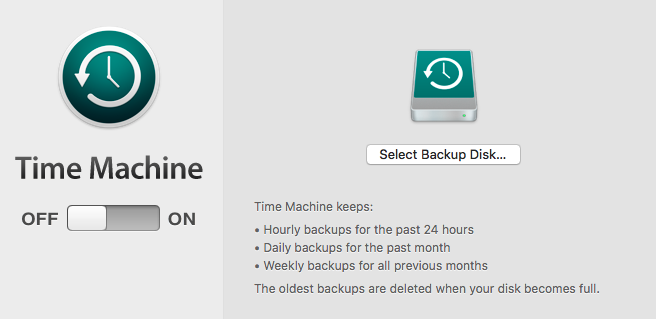
- Once Time Machine is turned off, you can now delete the files manually.
- Don’t forget to turn Time Machine back on after deleting the files.
Summary
When you encounter the error code 8072 when deleting or making changes to files and folders on your Mac, you can easily resolve this issue by following the appropriate fixes above. The error code 8072 is mainly a permission error, so you need to make sure that no app is using the file and that you have the capability to read and write on the file to be able to make changes. You can also use commands or a third-party file management app if the files are too stubborn for the common deletion process.
Give us some love and rate our post!

Vicrey Makapagal
Vic is a tech enthusiast who loves to be up-to-date with the latest and greatest technology in the world. He creates content that educates and helps users with their tech-related questions. Vic manages our website to ensure that our readers have a seamless experience while browsing. He excels in troubleshooting errors and resolving Windows issues for gaming and work purposes.
Many Mac users have recently experienced an error with their computer. They see an error code -8072 while trying to move files or folders to Trash or empty their Trash.
If you’re also experiencing this issue, you’re no doubt very frustrated. But don’t worry. We’ve put together two solutions to help you fix this error and remove your files.
Try these solutions
There are still alternative ways you can remove your files or empty your Trash. You may not have to try them all; just choose the right one for you.
- Force empty your Trash
- Remove your files or folders with Terminal
Method 1: Force empty your Trash
You can try force emptying your Trash if you can’t empty it normally. To force empty your Trash:
- Click and hold your Trash until you see its context menu appears.
- Press and hold the Shift key and Option key on your keyboard, then click Empty Trash.
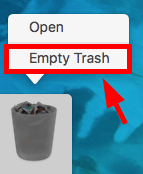
Check to see if your Trash is empty now. Hopefully it is, but if not you may need to…
Method 2: Remove your files or folders with Terminal
You can also remove your files or folders with Terminal on your Mac computer. Note that this will remove them permanently. Here’s how you can do it.
- On your desktop, click Go, then click Utilities.
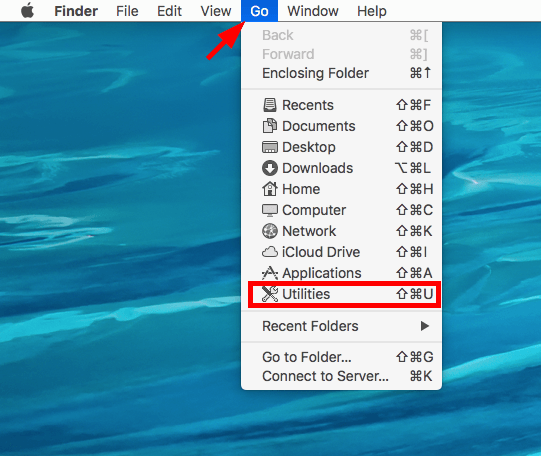
- Double click Terminal.
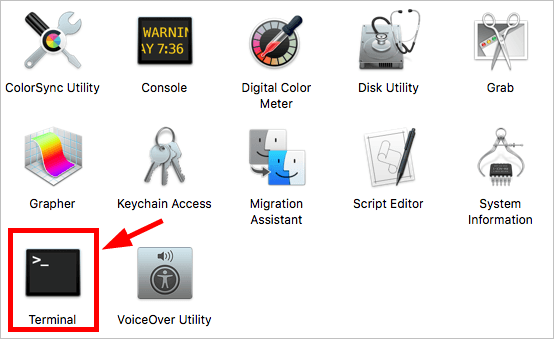
- Type the following line (DON’T press Enter on your keyboard):
Note that there is a space at the end.rm -r

- Open Finder.
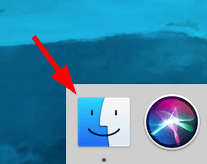
- Go to where the file or folder you want to remove is located.
- Drag the file or folder to the Terminal window.
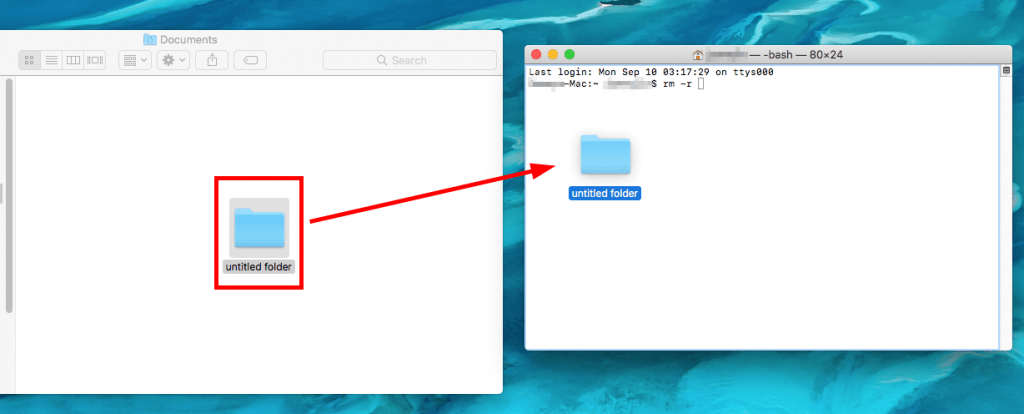
- On your Terminal, press the Enter on your keyboard.
This should remove the file or folder.
Hopefully, one of the methods above help you remove your files or folders. If you have any questions, leave us a comment below!
Jonny, a Microsoft Certified Professional, is a technical writer and technology enthusiast. He believes technology should bring users satisfaction, not annoyance, so he writes to help people overcome their tech troubles.
Contributor(s):
